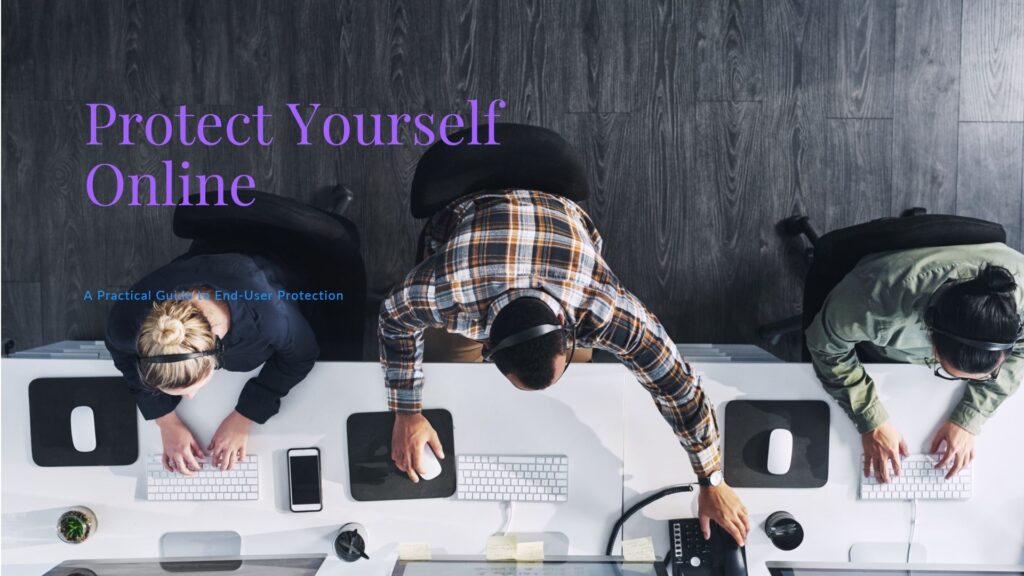
Empowering Your Users: A Practical Guide to End-User Protection
In today’s digital world, businesses rely heavily on technology and the people who use it. While strong firewalls and advanced security software are crucial, a critical layer of defence often gets overlooked: End-User Protection.
Why is End-User Protection Important?
Imagine your company as a castle. High walls and a moat (firewalls and security software) provide a strong first line of defense. But what about the people inside (your users)? End-user protection equips them with the knowledge and tools to act as your digital gatekeepers, significantly reducing the risk of cyberattacks.
Here’s why End-User protection is essential:
-
Human Error: Many cyberattacks exploit human vulnerabilities like phishing emails or clicking malicious links. Educated users are less susceptible to these tactics.
-
Stronger Defense: Empowered users become an active line of defense, identifying suspicious activity and reporting it promptly.
-
Reduced Risk: By minimizing the impact of human error, end-user protection lowers the overall risk of cyberattacks and data breaches.
Building a Robust End-User Protection Strategy:
Here are some practical steps to implement an effective end-user protection strategy:
-
Security Awareness Training: Regular training sessions educate users on common cyber threats, phishing attempts, and best practices for secure online behavior.
-
Strong Password Policies: Enforce strong password creation and management policies, including regular password changes and avoiding easily guessable information.
-
Multi-Factor Authentication (MFA): Implementing MFA adds an extra layer of security by requiring a second verification step beyond just a password.
-
Data Encryption: Encrypting sensitive data on devices and storage systems minimizes the risk of unauthorized access even in case of a breach.
-
Application Control: Manage and restrict access to applications and websites to prevent users from downloading malware or visiting malicious sites.
-
Incident Response Plan: Develop a clear plan for responding to security incidents, including procedures for reporting, containment, and recovery.
Investing in End-User Protection Makes Sense
By prioritizing end-user protection, you empower your employees to become active participants in your cybersecurity strategy. This reduces the risk of costly attacks, protects sensitive data, and fosters a culture of security within your organization.
EUP: A Shared Responsibility- Creating a secure digital environment requires a collaborative effort. By implementing a comprehensive EUP strategy and fostering a culture of cybersecurity awareness, you can empower your users and build a more resilient organization.
Take action today! By implementing these strategies, you can build a robust end-user protection program that safeguards your business and empowers your users.
Bonus Tip: Consider gamifying security awareness training to make it more engaging and interactive for your employees.
Remember, a secure future starts with empowered users!
